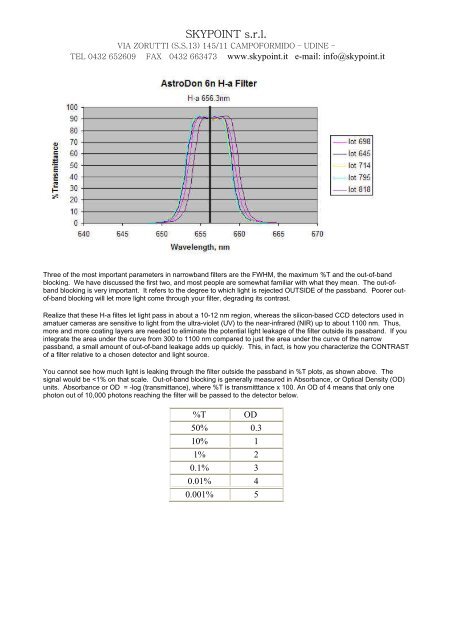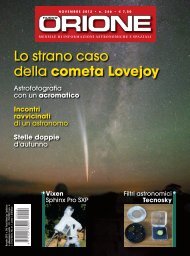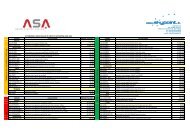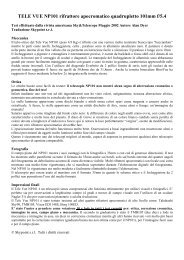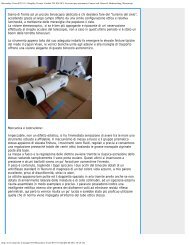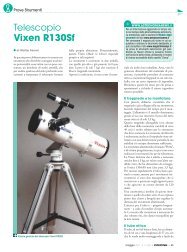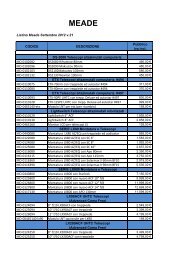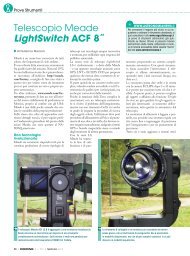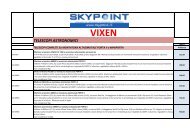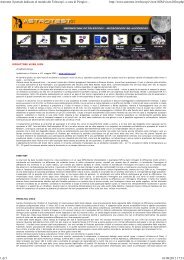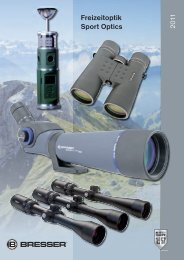CONFRONTO CON IL FILTRO H-ALFA BAADER - Skypoint Srl
CONFRONTO CON IL FILTRO H-ALFA BAADER - Skypoint Srl
CONFRONTO CON IL FILTRO H-ALFA BAADER - Skypoint Srl
Create successful ePaper yourself
Turn your PDF publications into a flip-book with our unique Google optimized e-Paper software.
SKYPOINT s.r.l.<br />
VIA ZORUTTI (S.S.13) 145/11 CAMPOFORMIDO – UDINE –<br />
TEL 0432 652609 FAX 0432 663473 www.skypoint.it e-mail: info@skypoint.it<br />
Three of the most important parameters in narrowband filters are the FWHM, the maximum %T and the out-of-band<br />
blocking. We have discussed the first two, and most people are somewhat familiar with what they mean. The out-ofband<br />
blocking is very important. It refers to the degree to which light is rejected OUTSIDE of the passband. Poorer outof-band<br />
blocking will let more light come through your filter, degrading its contrast.<br />
Realize that these H-a filtes let light pass in about a 10-12 nm region, whereas the silicon-based CCD detectors used in<br />
amatuer cameras are sensitive to light from the ultra-violet (UV) to the near-infrared (NIR) up to about 1100 nm. Thus,<br />
more and more coating layers are needed to eliminate the potential light leakage of the filter outside its passband. If you<br />
integrate the area under the curve from 300 to 1100 nm compared to just the area under the curve of the narrow<br />
passband, a small amount of out-of-band leakage adds up quickly. This, in fact, is how you characterize the <strong>CON</strong>TRAST<br />
of a filter relative to a chosen detector and light source.<br />
You cannot see how much light is leaking through the filter outside the passband in %T plots, as shown above. The<br />
signal would be


